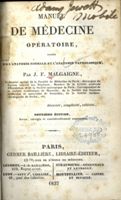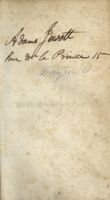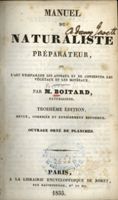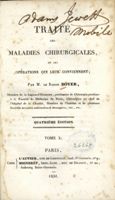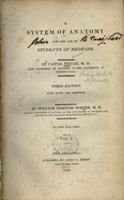Aladdin's Lamp
One of Dr. Billings's most productive and most enthusiastic agents in the field had no official obligations with the Army Medical Department. Adams Jewett, a senior general practitioner in Dayton, Ohio, became associated with the Library on a chance letter Billings had written to Jewett's son, also a physician, asking for his assistance.
His son was new to medical practice and unable to provide much help, but Adams had practiced in the area for decades and knew all physicians in the region as well as the most likely places to find contributors to the Library.
The 65-year-old physician was enthusiastic about Dr. Billings' project and energetically devoted himself to satisfying every need from the lists Billings sent to him. Of the Library, he wrote: "One of these days - I shant live to see it - thanks to your labors and those of your fellow laborers and successors, I hope the United States will be able to boast the completest med library in the world."
His one requirement for his participation was to build a substantial working library for his son's practice. He would trade older medical standard texts to Billings for copies of the newest editions and give them to his son. In rationalizing the value of these exchanges, Jewett said that "Aladdin's lamp is a very good illustration of how much better an old thing in the right place is than a new one."
In the course of his inquiries he found that often medical books and pamphlets had such little resale value that widows and descendants of physicians would often sell the material to paper mills for their pulp.
Dr. Jewett often showed a sense of humor while writing about his progress. He visited local physicians and widows of deceased physicians for contributions. In telling of one local doctor's offerings, he introduced him as "Dr. Pilate of this place (not Pontius of Judea) has the following works in his library...."
Manuel de Medecine Operatoire, Fondee sur l'Anatomie Normale et l'Anatomie Pathologique, by Joseph Francois Malgaigne, 1837. Dr. Jewett studied abroad to complete his medical education. In 1838 he studied at the Royal College of Physicians in Edinburgh and at the University of Paris. This is one of the texts he kept while studying in France.
Items from the Surgeon General's Library
Last Reviewed: February 8, 2024


